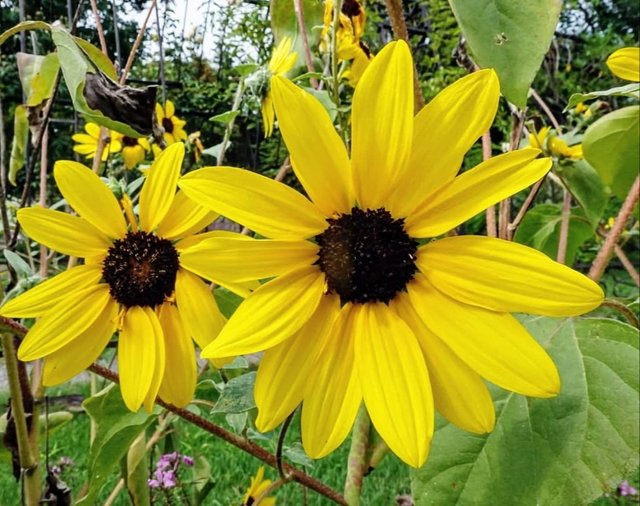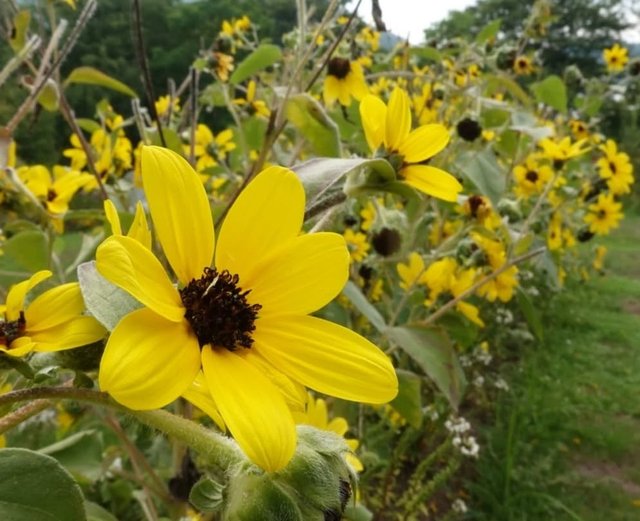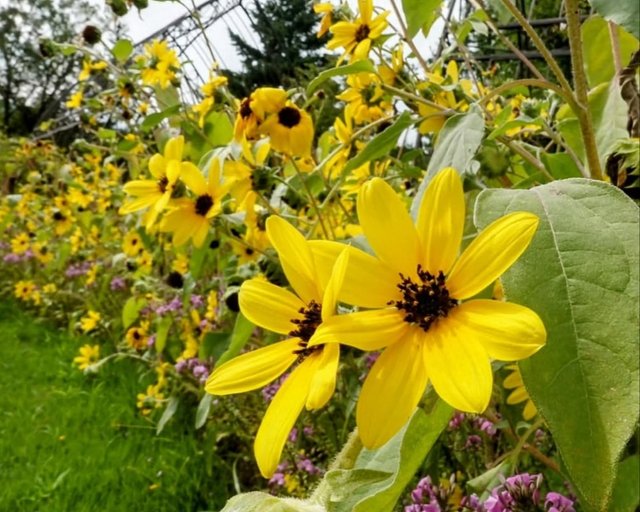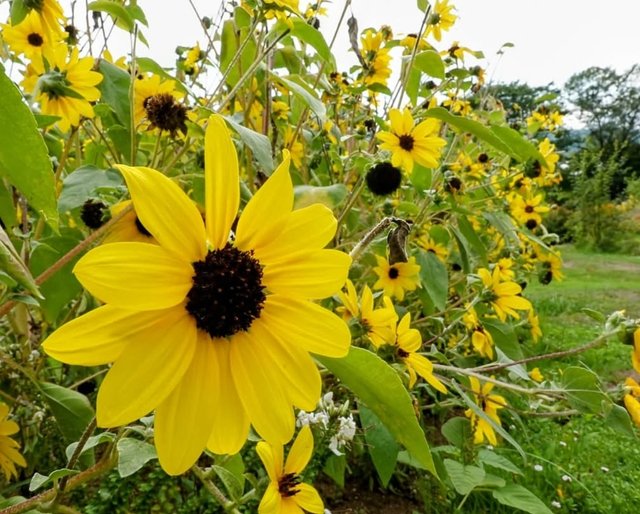Yellow Colour Helianthus Pauciflorus Flower
Helianthus pauciflorus, commonly known as the stiff sunflower or prairie sunflower, is a striking perennial wildflower that belongs to the Asteraceae family. Native to North America, this species is an important part of prairie and grassland ecosystems, admired not only for its beauty but also for the ecological benefits it provides to wildlife and the landscape.
Appearance and Characteristics
Helianthus pauciflorus is recognized by its tall, upright stature, typically growing between 2 to 6 feet in height, depending on soil conditions and climate. Its name pauciflorus means “few-flowered,” yet the plant produces a generous number of blooms when fully mature. Each flower head resembles a miniature version of the common sunflower (Helianthus annuus), but they are generally 2 to 4 inches in diameter, with bright golden-yellow ray florets surrounding a darker, often brown to purplish central disk.
The stems of this sunflower are stiff, hairy, and unbranched until they near the top, where flower clusters emerge. The leaves are lance-shaped to oval, rough-textured, and arranged oppositely along the stem, with prominent veins that add to their rugged appearance. This coarse texture and sturdy growth habit help the plant withstand wind and other environmental stresses common in open prairies.
Habitat and Range
Stiff sunflower thrives in dry prairies, open fields, roadsides, and meadows, preferring full sun and well-drained soils. Its natural range spans much of central and eastern North America, from the Great Plains to the Midwest and parts of the eastern United States. Because it is drought-tolerant and hardy, it can survive in poor soils where many other plants struggle.
It is also rhizomatous, meaning it spreads underground through root structures. Over time, it can form colonies, making it a valuable plant for prairie restoration projects and erosion control.
Ecological Importance
Helianthus pauciflorus plays a crucial role in supporting biodiversity:Pollinators: Its bright blooms attract a wide range of insects, including bees, butterflies, and beetles. Native bees, in particular, rely on sunflowers for nectar and pollen during the late summer blooming season.
Birds: After flowering, the plant produces seeds that are highly nutritious and eagerly eaten by finches, sparrows, and other seed-eating birds.
Wildlife cover: The dense stands formed by stiff sunflower provide cover for small mammals and ground-nesting birds, making it an important structural element of prairie ecosystems.
Cultivation and Uses
Gardeners and land managers value Helianthus pauciflorus for its ornamental beauty, hardiness, and ecological benefits. It is often included in native plant gardens, wildflower meadows, and prairie restorations. Because of its ability to spread, it may not be suited for very small or formal gardens, but in larger landscapes, it provides a splash of late-season color and sustains local wildlife.




%20(8).jpeg)